
PR
"Love at the Risk of Your Life."There remains an anecdote about a love that cost her life in the early Heian Period. A poetess of the Heian period, known as the most beautiful woman of all timeOne Hundred Night Passage" between Ono no Komachi and Fukakusa Shoshoepisodes is what it is all about.
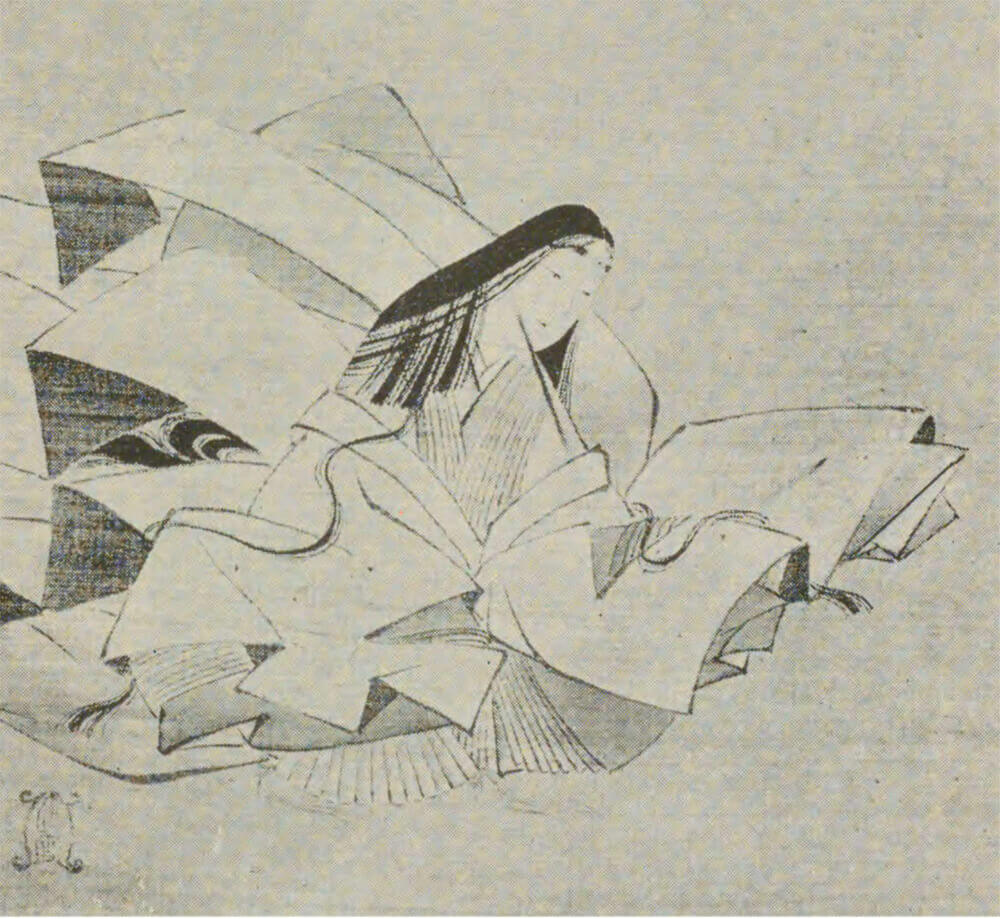
Ono Komachi from "Geikai yuyuu yoku" (Tatsuyuki Takano, 1940)
(Adapted from the Digital Collections of the National Diet Library)
Since love at that time was mainly an exchange of letters and poems, and never a face-to-face meeting, Komachi must have been a person of considerable literary talent and had a good sense in brushwork and choice of paper. However, for Komachi, who received love letters from all over the place, the love letter from Shogun Fukakusa was just one of many, and she may have even considered it a nuisance. Komachi may have even thought it was bothersome,If you visit me for a hundred nights, I will follow your will."And then, they make a condition.
The Shogun Fukakusa, who was in love with Komachi, did as he was told and continued to go to Komachi's residence night after night. The first night was probably a moonlit night with autumn insects. Since then, the Shogun had been coming to Komachi's house even on dark and rainy nights. On rainy nights, he wore a straw raincoat and carried a bamboo walking stick. On the 100th night, there was a heavy snowfall. It is said that the Shogun was so cold and exhausted that he froze to death.
I visited a place in Fushimi that is associated with the Hundred Nights Passage.
Kinjoji Temple of the Soto sect, located in Nishimasuya-cho, Fushimi-ku, is said to be the site of Fukakusa Shosho's residence. The temple is a Soto sect temple known for its principal image, the Fushimi Daibutsu (Great Buddha), and within its precincts are the Shosho Mound and Komachi Mound, as well as the well of Shosho's appearance, which is said to be the water of Shosho's tears,small pond at the sight of a small townThere is.
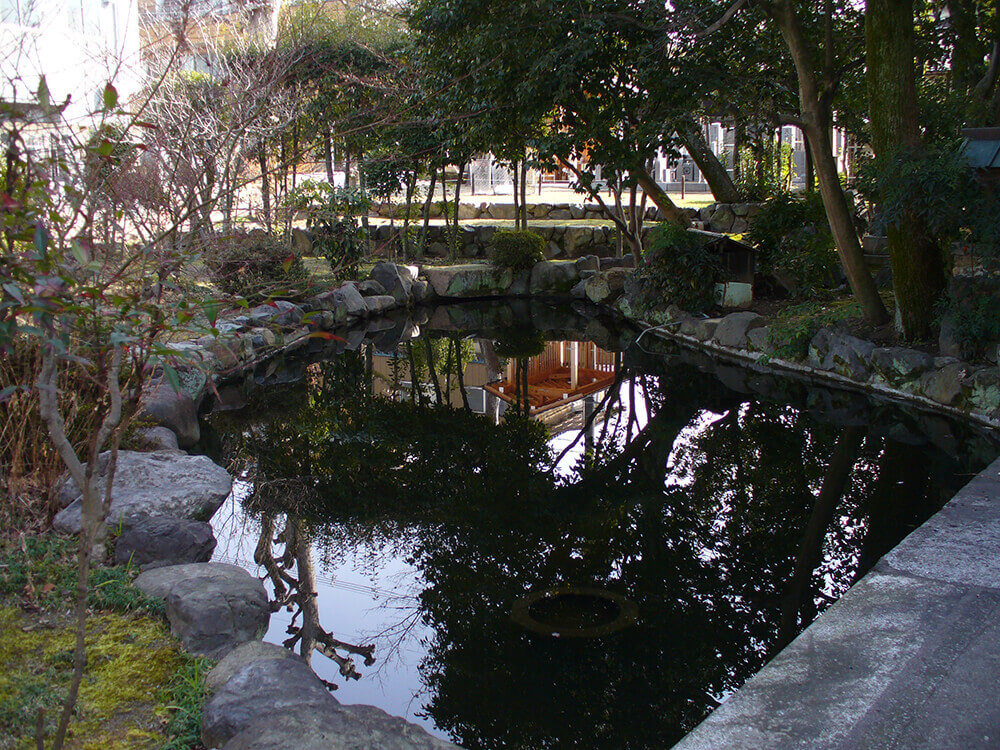
Sugatami Pond on the grounds of Kinjoji Temple
There are memorial towers for the Shosho and Komachi, which may have been erected by later generations after they learned of the episode of the Hundred Nights Passage. There is also a path called "Shosho's Passage" in the precincts of the shrine, and it is said that if a person who is facing a lawsuit passes through this path, his or her wish will not be granted.
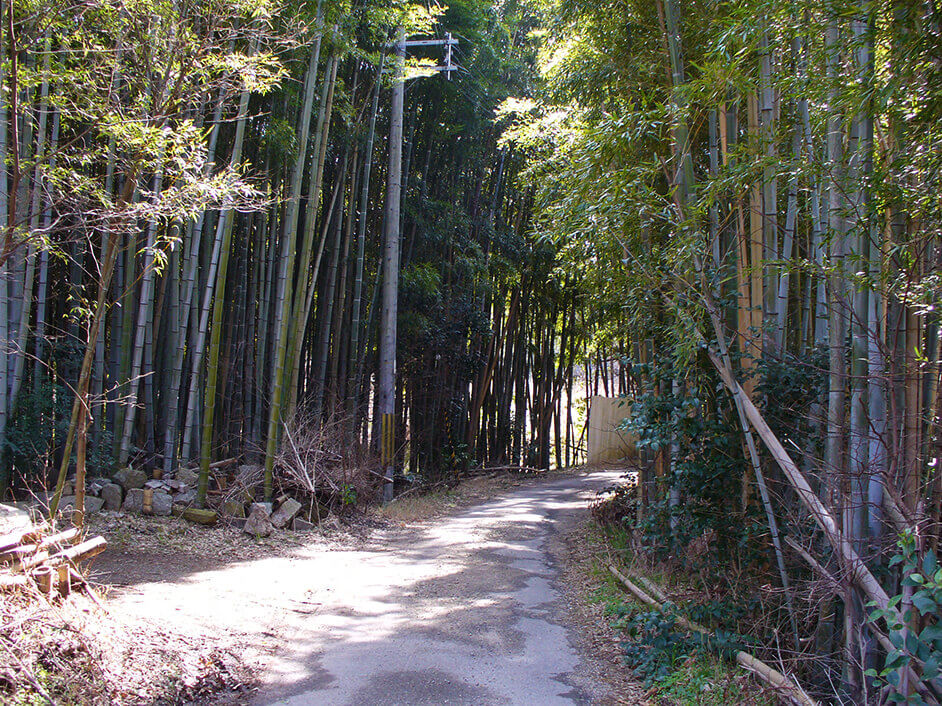
Ancient path in the bamboo grove where the Shogun is said to have passed
And one more thing to visit is about 5 km away from Kinjo-ji TempleZuishin-inIt is a temple of the Zentsuji school of the Shingon sect. The temple is the head temple of the Zentsuji school of the Shingon sect and is famous for its ume plum blossoms.
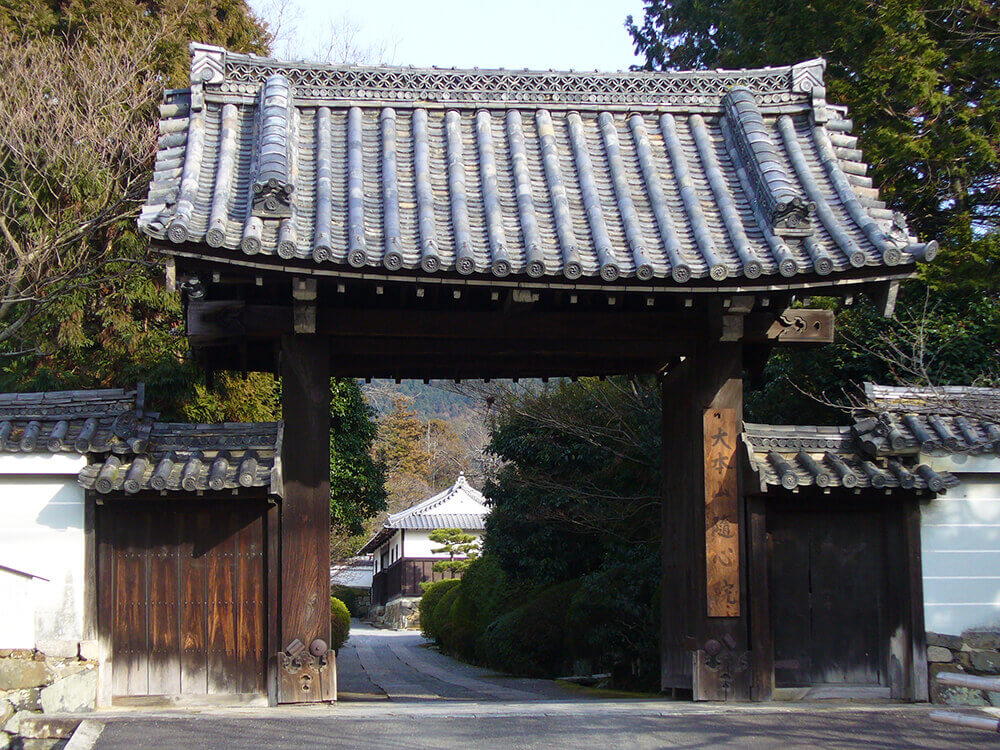
Zuishin-in Temple associated with Ono no Komachi
Even though it is only about 5 km, it must have been very difficult to make the round trip every night. The ancient path through the bamboo thicket along the way makes one imagine a thousand years ago. In the precincts of the temple, there is a mound of Komachi's writings, in which 1,000 letters to Komachi are said to be buried. There is also a cosmetic well where Komachi is said to have washed her face morning and evening.
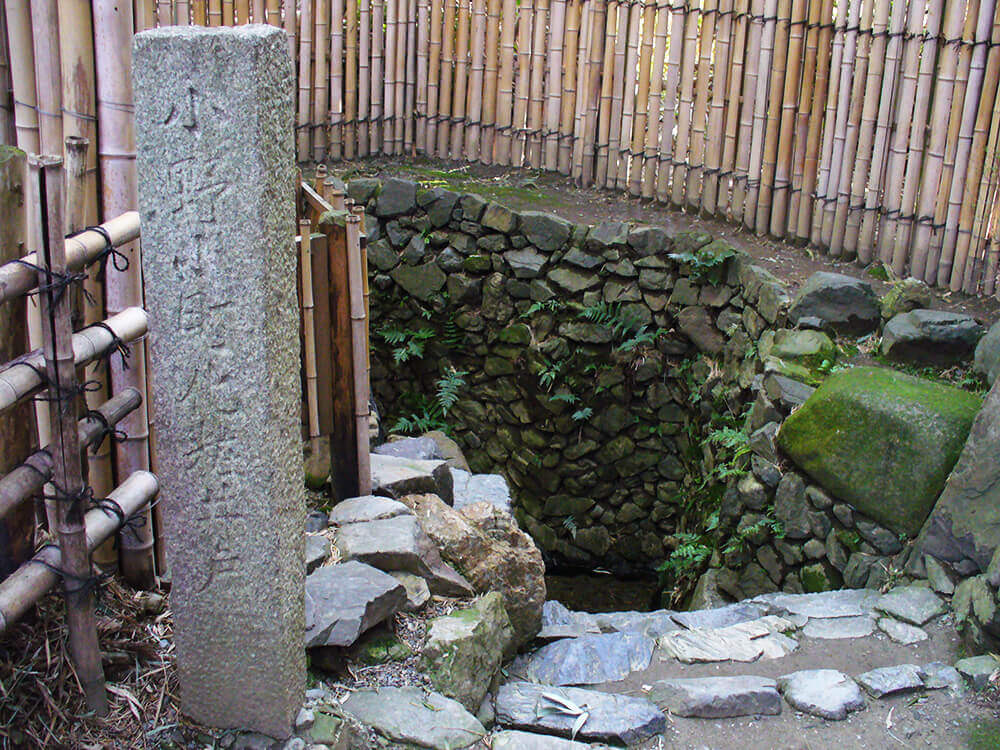
Ono no Komachi cosmetic well in the precincts of Zuishin-in Temple
Well,The Hundred Nights Passage ended with the death of the Major General, but there are episodes that follow..
One day, the spirit of Ono no Komachi appeared to a monk and begged him to make offerings to her. While the monk was burning incense and reciting sutras for Komachi, the spirit of a man appeared to him and said, "If Komachi becomes a Buddha, I will sink to the bottom of suffering alone again. He said, "If Komachi becomes a Buddha, I will sink alone into the depths of suffering once again. The person who kept Komachi's spirit from going to heaven was the Shogun Fukakusa, the protagonist of the other "Hundred Nights Passing. The priest, who felt sorry for the Shosho, mourned the two spirits and allowed them to be reborn together.
It is said that there used to be 99 huge Kaya trees growing around the Zuishin-in precincts, and a large Kaya tree still remains near Zuishin-in today. The tree is said to have grown from one of the grains that Komachi spelled out one by one every time the Shogun came by, and was scattered after their deaths.
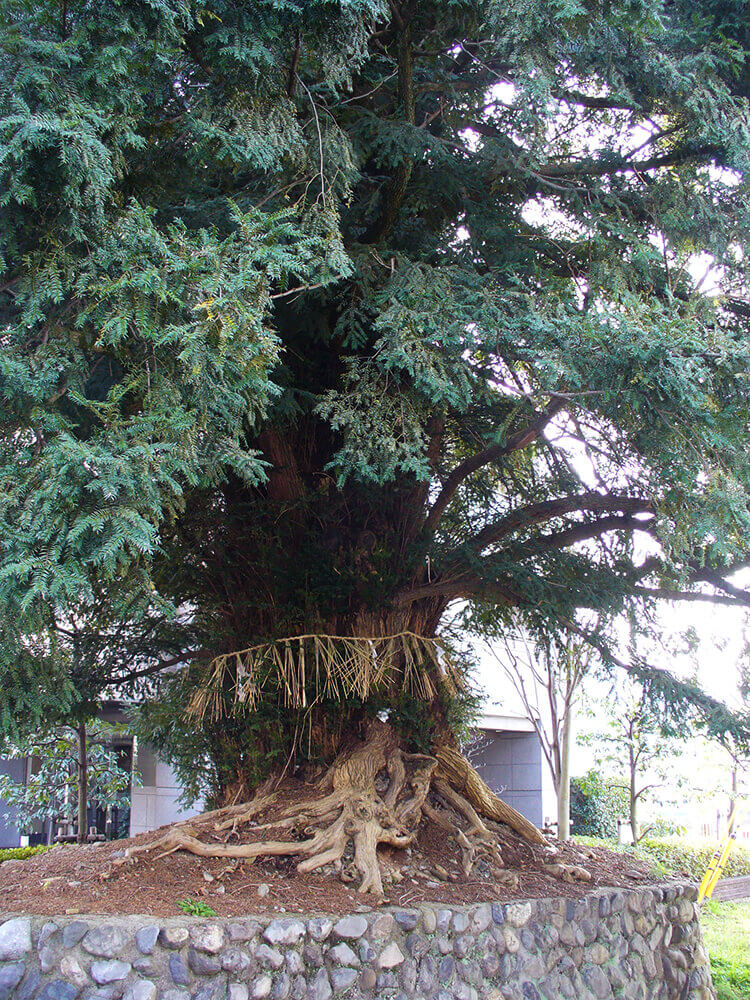
Kaya tree still remains around Zuishin-in Temple
However, there is a contrary theory. The Shogun was the one who placed the close grain grains on the doorstep of Komachi's house. The Shogun left a close grain nut every night at the gate of Komachi's house as proof of his visit, but he was unable to fulfill his wish.
In fact, Komachi was also struck by the sincerity of the Shogun every time he came to visit, spelling out the close-colored fruit,Maybe he was looking forward to a hundred nights.It may be.
Tradition that exists everywhere in the city of Kyoto. It is not just a picture, it is secretly alive in this modern age and continues to coexist with people. The two of Office TO, who previously wrote a series of articles "Kyoto's Demon World Exploration" in the monthly magazine Leaf, explore the mysterious "different" world of Kyoto, which was created over 1200 years. I will unravel the story while actually visiting the place. .
 News
News Feature article
Feature article Featured event
Featured event